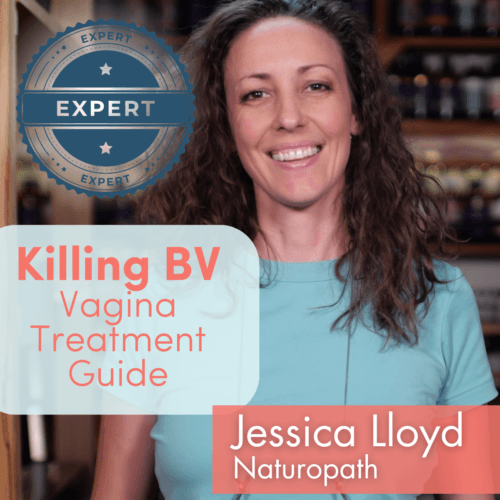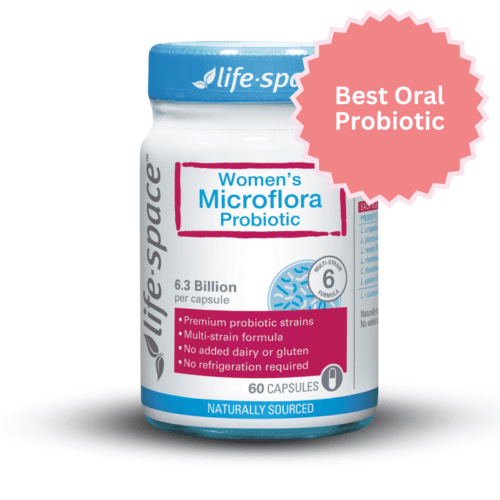Endometriosis is a process whereby endometrial cells are found – and grow and bleed – in the wrong place. That is, outside of the uterus, in places such as the ovaries, wall of the uterus, bladder and bowel.
We still don’t know why this occurs, but it is very common with endometriosis being estimated to affect between 10-15 per cent of menstruating women and possibly up to 35 per cent of infertile women, most often between ages 25-30. The true figure may be higher.1,2
Endometriosis is found more in women with short menstrual cycles and longer flow.3 Treatment is commonly followed by recurrence of the issue.
Endo = within Metra = uterus Osis = disease process
Adenomyosis is another condition where endometrial cells are in the wrong place, but in this case, they appear trapped in the uterus wall, instead of growing outside of the uterus, like in endometriosis.
Hormonal influences on the endometrium
Endometrial cells are influenced constantly by hormones. During the follicular phase (when immature eggs are preparing themselves), increasing levels of oestrogen have the most influence on the endometrial cells. This is what causes the endometrium to thicken.4
Once the luteal phase is in full swing, after ovulation, the endometrium produces tiny glandular structures due to the effect of progesterone. As menstruation starts, the endometrium sheds.
In endometriosis, this shedding occurs in the pelvic cavity, which leads to inflammation, pain, scarring and adhesions (scar tissue that adheres two organs together).5
Increases in endometriosis growths can cause bloating and pelvic pain prior to your period.
Symptoms of endometriosis
- May have no symptoms
- Pelvic pain either during your period or between periods
- Very painful periods
- Infertility
- Heavy or irregular bleeding
- Pain associated with sex
- Pain that gets worse towards the end of the period
- Pain before periods and at ovulation
- One-sided pelvic pain
- Painful bowel movements or urination6
- Diarrhoea, nausea, vomiting
Causes of endometriosis
Retrograde flow is often blamed – that is, endometrial cells go up the fallopian tubes and out into the pelvic cavity. This can happen since fallopian tubes are not sealed chambers, but open out into the pelvic cavity, near the ovaries. Retrograde flow is not thought to be the only answer though.7
Contributing factors may be individualised and are hypothesised to include:8
- Retrograde flow (which is believed to be normal, and not necessarily associated with issues)
- Cellular changes or coelomic metaplasia (cell changes on the surface of pelvic organs and ovaries where normal cells differentiate into endometrial cells)
- Mullerian duct tissue that develops into endometrial tissue (the Mullerian ducts are what our reproductive organs are made out of in the womb)
- Relative oestrogen excess (more oestrogen exposure causes more endometrium to develop)9
- Aromatase activity causing more oestrogen to be present (aromatase converts testosterone into oestrogen inside fat cells)
- Chemical exposure – dioxins are the main environmental toxins implicated in endometriosis due to their ability to behave like estrogen in the body. They reach our environment from the manufacture of herbicides, pesticides, tampons, paper and from smelting and exposure can occur from living near these or working in types of industry, through tampon use and through consumption of contaminated meat, fish, shellfish and dairy.
- Inflammation is thought to promote endometrial growth
- Impaired immune cell function (immune cells are garbage collectors, and if impaired, may leave behind debris in the pelvic cavity that would normally get cleaned up)
- Autoimmunity (autoantibodies may exist to endometrial antigens)
Risk factors for endometriosis10–12
- Started period early
- Bleeding that goes for longer than seven days
- Heavy bleeding (menorrhagia)
- Genetic disposition (mother or a sister with endometriosis)
- Strenuous physical activity during menstruation (despite women who exercise regularly having less risk)
- Not having a full-term pregnancy (pregnancy can spontaneously ‘cure’ endometriosis, and breast-feeding can delay recurrences)
- IUD use
- Caffeine (5-7 grams of caffeine per month – tea has about 50mg and coffee has about 100mg, so one coffee a day is 3 grams per month)
- Alcohol use is associated with infertility, but it’s not clear whether that is because of the symptoms or is a cause
- Abnormal bowel flora (monkey studies)
- Sex during your period is associated with higher incidences of endometriosis (but sex with orgasm during menstruation while still using tampons was associated with less risk)
- Tampon use of more than 14 years is associated with higher levels of endometriosis
- Environmental factors like toxins (dioxin, DDT)
- Redheads have more endometriosis
- Higher levels of vitamin D are associated with endometriosis
Diagnosis of endometriosis
The only way to diagnose endometriosis is via laparoscopy – where a camera is inserted through a small incision near your belly button in order to take a look around. This is done under general anaesthetic so your surgeon may remove any endometrial growths found during the procedure.13,14
Pelvic ultrasound is often used to guide the decision to undergo laparoscopy as large growths can sometimes be seen during this less-invasive procedure, however, it should be noted that ultrasound cannot confirm or rule out the presence of endometriosis.
Treatments for endometriosis
Removal of endometrial lesions may or may not give great relief from the symptoms of the disease and often, the growths reoccur. Treatments consist mostly of condition management using medical and naturopathic/alternative treatments.15,16
Combination treatments tend to get the best results, however everyone will respond well to different types of treatments depending on their biology.
Medical management includes hormonal therapies such as the contraceptive pill and hormonal intrauterine devices (IUDs) that may stop the disease from getting worse or prevent regrowth after surgeries.17
Other options include the herbal medicine maritime pine bark extract and the supplement n-acetylcysteine, both of which have shown great results in clinical trials.18,19 Seeing a naturopath for an individualised treatment plan to work is also an option.
Learn how to manage relative oestrogen excess with diet.
References
- 1.Kurek A, Kłosowicz E, Sofińska K, Jach R, Barbasz J. Methods for Studying Endometrial Pathology and the Potential of Atomic Force Microscopy in the Research of Endometrium. Cells. Published online January 22, 2021:219. doi:10.3390/cells10020219
- 2.Leonardi M, Espada M, Kho RM, et al. Endometriosis and the Urinary Tract: From Diagnosis to Surgical Treatment. Diagnostics. Published online September 30, 2020:771. doi:10.3390/diagnostics10100771
- 3.Wei M, Cheng Y, Bu H, Zhao Y, Zhao W. Length of Menstrual Cycle and Risk of Endometriosis. Medicine. Published online March 2016:e2922. doi:10.1097/md.0000000000002922
- 4.Chantalat E, Valera MC, Vaysse C, et al. Estrogen Receptors and Endometriosis. IJMS. Published online April 17, 2020:2815. doi:10.3390/ijms21082815
- 5.Donnez J, Cacciottola L. Endometriosis: An Inflammatory Disease That Requires New Therapeutic Options. IJMS. Published online January 28, 2022:1518. doi:10.3390/ijms23031518
- 6.Gete DG, Doust J, Mortlock S, Montgomery G, Mishra GD. Associations between endometriosis and common symptoms: findings from the Australian Longitudinal Study on Women’s Health. American Journal of Obstetrics and Gynecology. Published online November 2023:536.e1-536.e20. doi:10.1016/j.ajog.2023.07.033
- 7.Sourial S, Tempest N, Hapangama DK. Theories on the Pathogenesis of Endometriosis. International Journal of Reproductive Medicine. Published online 2014:1-9. doi:10.1155/2014/179515
- 8.Lamceva J, Uljanovs R, Strumfa I. The Main Theories on the Pathogenesis of Endometriosis. IJMS. Published online February 21, 2023:4254. doi:10.3390/ijms24054254
- 9.Dyson MT, Bulun SE. Cutting SRC-1 down to size in endometriosis. Nat Med. Published online July 2012:1016-1018. doi:10.1038/nm.2855
- 10.Zhang Y, Ma NY. Environmental Risk Factors for Endometriosis: An Umbrella Review of a Meta-Analysis of 354 Observational Studies With Over 5 Million Populations. Front Med. Published online October 25, 2021. doi:10.3389/fmed.2021.680833
- 11.Zieliński K, Drabczyk D, Kunicki M, Drzyzga D, Kloska A, Rumiński J. Evaluating the risk of endometriosis based on patients’ self-assessment questionnaires. Reprod Biol Endocrinol. Published online October 28, 2023. doi:10.1186/s12958-023-01156-9
- 12.Meaddough EL, Olive DL, Gallup P, Perlin M, Kliman HJ. Sexual Activity, Orgasm and Tampon Use Are Associated with a Decreased Risk for Endometriosis. Gynecol Obstet Invest. Published online 2002:163-169. doi:10.1159/000058368
- 13.Giese N, Gilbert E, Hawkey A, Armour M. Unmet Needs of Australians in Endometriosis Research: A Qualitative Study of Research Priorities, Drivers, and Barriers to Participation in People with Endometriosis. Medicina. Published online September 13, 2023:1655. doi:10.3390/medicina59091655
- 14.Crump J, Suker A, White L. Endometriosis: A review of recent evidence and guidelines. Aust J Gen Pract. Published online February 1, 2024:11-18. doi:10.31128/ajgp/04-23-6805
- 15.Pickett C, Foster WG, Agarwal SK. Current endometriosis care and opportunities for improvement. Reproduction and Fertility. Published online July 1, 2023. doi:10.1530/raf-22-0091
- 16.Li H, Han Y, Cai Y, Su X, Tan L. Clinical effects of laparoscopic surgery for the treatment of endometriosis and endometriosis-fertility: A retrospective study of 226 cases. Front Surg. Published online January 16, 2023. doi:10.3389/fsurg.2022.1049119
- 17.Grandi G, Barra F, Ferrero S, et al. Hormonal contraception in women with endometriosis: a systematic review. The European Journal of Contraception & Reproductive Health Care. Published online January 2, 2019:61-70. doi:10.1080/13625187.2018.1550576
- 18.Kohama T, Herai K, Inoue M. Effect of French maritime pine bark extract on endometriosis as compared with leuprorelin acetate. J Reprod Med. 2007;52(8):703-708. https://www.ncbi.nlm.nih.gov/pubmed/17879831
- 19.Iravani S, Zolfaghari B. Pharmaceutical and nutraceutical effects of Pinus pinaster bark extract. Res Pharm Sci. 2011;6(1):1-11. https://www.ncbi.nlm.nih.gov/pubmed/22049273
Get a fresh perspective with a qualified, experienced vulvovaginal specialist naturopath.
This product has multiple variants. The options may be chosen on the product pageThe most comprehensive vaginal microbiome test you can take at home, brought to you by world-leading vaginal microbiome scientists at Juno Bio.
Easy-to-use BV and AV treatment program.
Promote and support a protective vaginal microbiome with tailored probiotic species.





